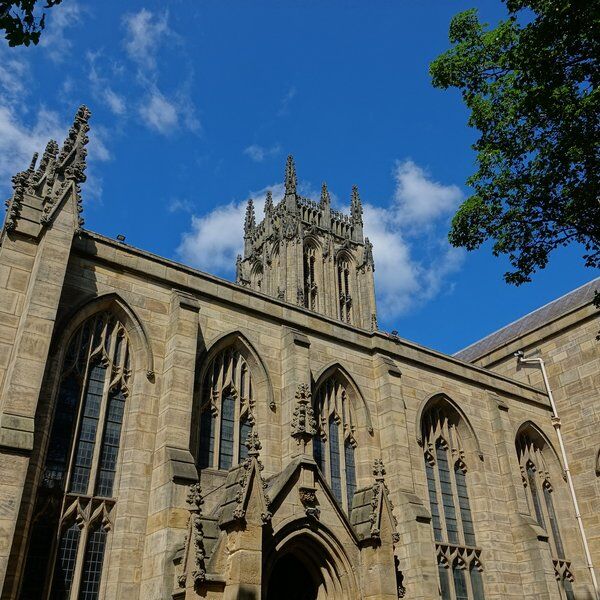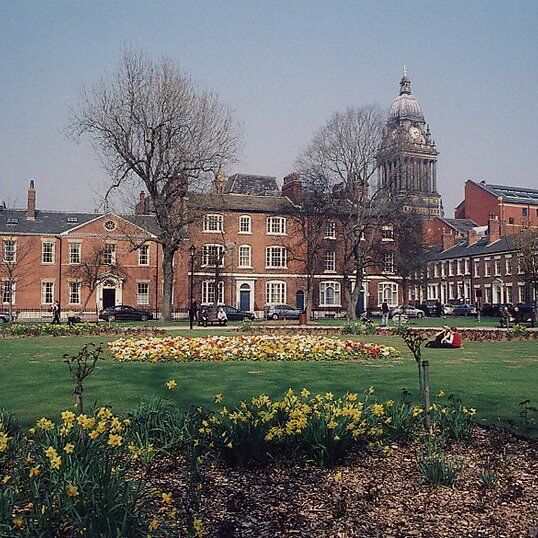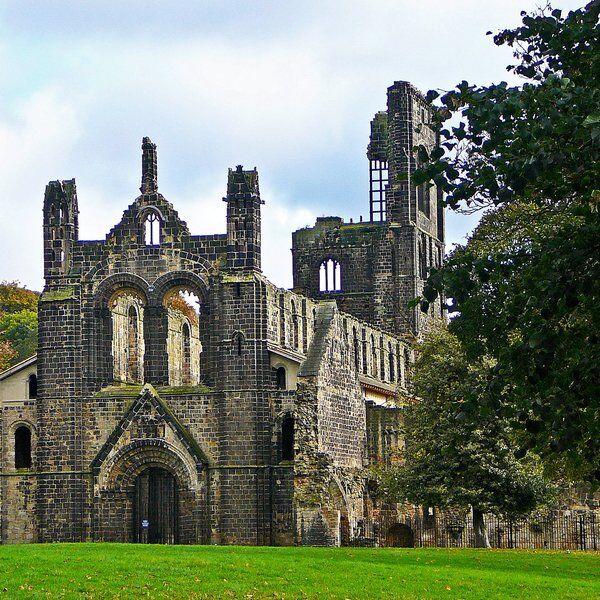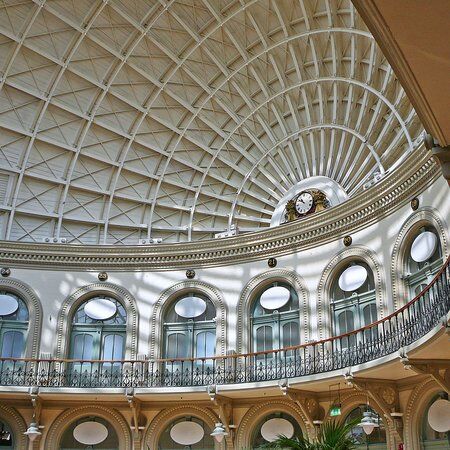
Discover Leeds Corn Exchange
Leeds Corn Exchange is a shopping mall with a 160-year history. After being first established in 1864 as a hub for corn traders, this landmark designed by architect Cuthbert Brodrick has become a marketplace for independent retailers to sell their products. With a total construction cost of £360,000, Brodrick's design is a fine example of Victorian architecture.
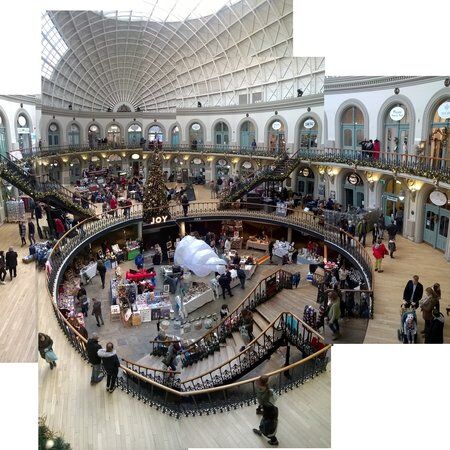
"Our vision is to create a destination that’s home to the most exciting retail and one that offers shoppers an unforgettable experience."
Despite its historic design there is also a futuristic element to the building and under the management of Rushbond PLC, the interior has undergone redecoration and improved accessibility in recent years. Today, visitors can check out spaces like the Simcha Gallery and Fabrikk or The Plant Point but there are plans to attract even more retailers, open a new food court, and host events. Recent successes, such as the Rum Festival and collaborations with local artists, have already driven increased footfall, signalling a promising future for this iconic landmark.
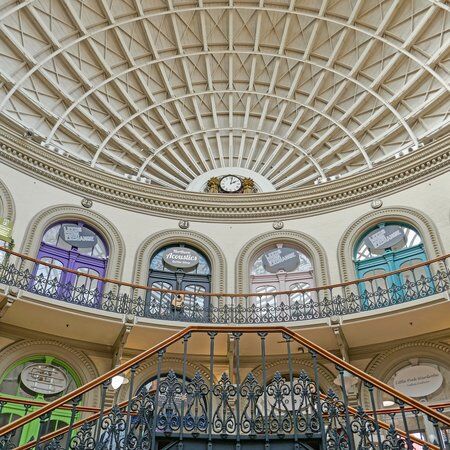
The History of the Leeds Corn Exchange
Origins and Construction
Leeds Corn Exchange has roots in the markets of Cross Parish, in the early 19th century. In 1828, responding to the growing need for a dedicated trading space, the town erected its first purpose-built corn exchange on the north side of Headrow. However, by the 1850s, an even larger exchange space was needed.
Architect Cuthbert Brodrick, renowned for his work on Leeds Town Hall, was tasked with designing the new Corn Exchange. In 1861 work on the structure commenced, with its grand opening taking place in 1863. Drawing inspiration from the grandeur of the Halle au Blé in Paris, Brodrick designed the facility in an elliptical shape.
This oval design was actually a unique architectural accomplishment at the time. But the best feature has to be the domed roof reminiscent of Paris’ Bourse de Commerce. Resembling the upturned hull of a boat, the roof's longitudinal ribs provide structural support, accentuating two large glazed sections. These sections allow natural light to flood the interior while strategically blocking direct sunlight.

Golden Era of Trade
After the Exchange was completed in 1863, it didn’t take long to become a thriving centre of commerce, attracting traders from across the region. By 1872, it consisted of 161 stands, making Leeds' a leader in the grain market of northern England. Facilitating the trade of vast quantities of grain, it greatly impacted the city’s economic growth.
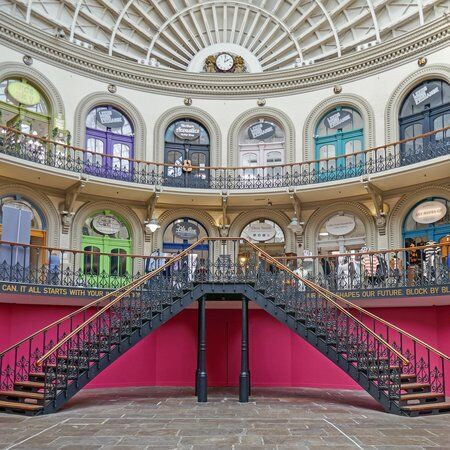
Decline and Regrowth
As the 20th century progressed, a change in economic drives led to a decline in corn trading activity. By the 1960s, the once-busy Exchange saw a significant drop in traders, leading to a reduction in opening days until it operated just one day a week by 1969. Threatened by disuse and disrepair, whispers of demolition loomed.
However, in the late 1980s, Speciality Shops plc breathed new life into the building, mixing up its purpose and transforming it into a retail centre. As of 2019, the Corn Exchange contains about 30 independent retailers and food outlets on the ground floor, with offices on the upper levels.
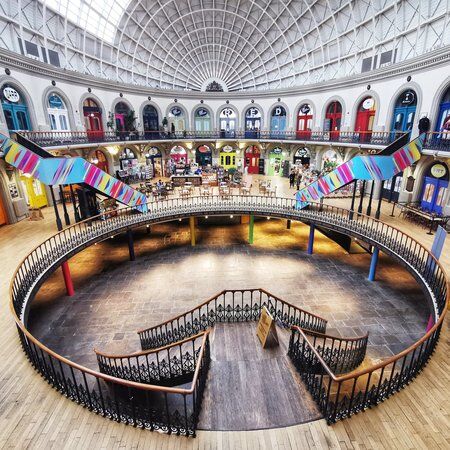
Visiting the Leeds Corn Exchange
Leeds Corn Exchange is a paradise for shoppers, the stalls spill over with handmade jewellery, vintage clothing, artisanal cheeses, and tasty other treats. There are bakeries, trendy cafes, boutiques, galleries, and a record store Narr Radio, where you can lose yourself in the music.
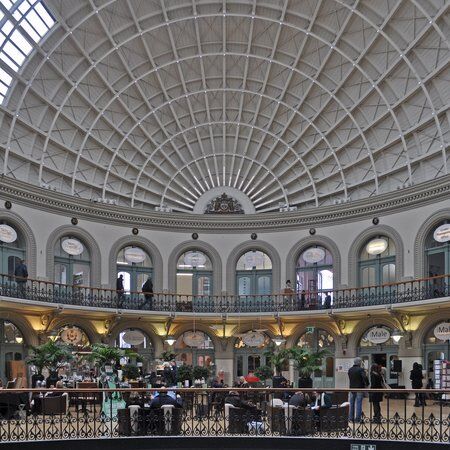
Shopping at Leeds Corn Exchange
For those seeking a little retail therapy, the Corn Exchange has an array of independent boutiques and shops that promise hours of browsing bliss. Mki Miyuki Zoku sells Japanese streetwear, Roller Girl Gang has all your skate needs covered, and All Blues Co. sells high-profile Korean menswear brands. There are also jewellery boutiques such as Sour Cherry and a great florist; Attic in Bloom.
Art lovers shouldn't miss the craft store Bellwether Yarns, and Colours May Vary, a bookshop and gallery bursting with quirky cookbooks, architecture magazines, and literature classics with funky, reworked covers. There is also Cole’s Gallery, which has ongoing exhibitions from up and coming British artists and the Sculpture Gallery where, you guessed it, you can view an array of different sculptures.
If it's a makeover you’re after, why not get your hair and nails done at Mint beauty salon or maybe a fresh fade from Mr Men’s Barbers is more your style! There’s even a tattoo parlour; Red Tattoo and Piercing.
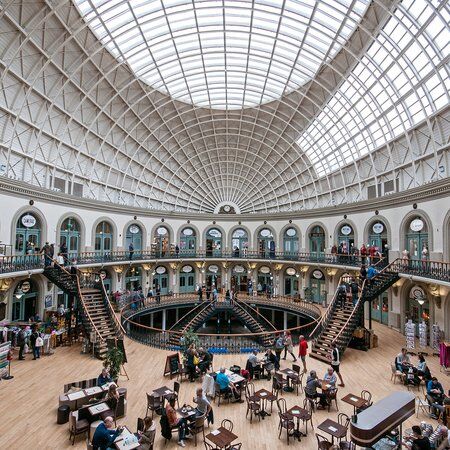
Eating at Leeds Corn Exchange
The Corn Exchange has two exceptional independent eateries. Bruschetta is a coffee shop and cafe renowned for its seasonal menu crafted from locally sourced ingredients procured from Kirkgate market. Despite its modest size, Bruschetta's menu packs a punch, featuring fresh dishes full of flavour that offer excellent value for money. Among its must-try offerings is the Full Algerian breakfast, an ensemble of harissa-spiced cannellini beans atop toasted bruschetta, crowned with a poached egg and merguez sausage.
Next up The Cheesy Living Co. Here, patrons can sink their teeth into anything from yummy focaccia sandwiches to their bespoke fondue Sunday roast. Additionally, The Cheesy Living Co. sells a great selection of cheeses and charcuterie and consciously tries to source local ingredients.

Explore Leeds with CityDays
The best way to discover more hidden gems around Leeds is to take your time and, ideally, have a pre-planned route that takes you past all the noteworthy nooks and hidden gems.
We can help you there!
Our brand-new routes, Medieval Origins and Wagonways, Rivers and Rails combine the fun of an outdoor treasure hunt with the historic facts and whimsical trivia of a walking tour.
Answer riddles, solve puzzles and learn more about Leeds' history in a new and interactive way - plus you get 20% off food and drink at a historic pub chosen by us!
Take the stress out of planning your visit to Leeds and book your adventure today!
Not visiting Leeds this time? Don’t worry, you’ll find us all over the world.









